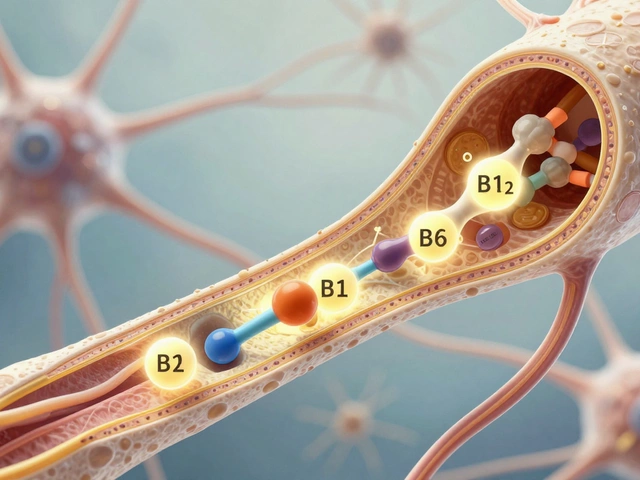People talk about IVF like it’s a magic wand for making babies—but hold on for a second. IVF isn’t handed out like candy, and there’s a good reason why doctors don’t push everyone down that path.
If you’ve heard couples mention side effects or stories of spending thousands with nothing to show, you’re not alone. Real talk? IVF can get rough, both on your body and your bank account. Sometimes, all the effort still ends in more heartache than hope. Even the best clinics can’t promise a happy ending, and the numbers are a lot lower than Instagram makes it seem.
So, why do some doctors actually say, “Hey, maybe IVF isn’t right for you?” There’s more to the story, especially if you have certain health stuff going on or if the odds are seriously stacked against a good result. Let’s get to the bottom of it and lay out what you should really know—before getting swept up in the IVF wave.
- Beyond the Hype: What IVF Really Means
- When IVF Falls Short: Who Should Think Twice?
- Risks That Hardly Get Mentioned
- Emotional and Financial Tolls
- Doctors’ Real Reasons for Saying No
- What to Try Before or Instead of IVF
Beyond the Hype: What IVF Really Means
IVF, or IVF treatment, stands for in vitro fertilization. It basically means egg meets sperm outside the body, usually in a lab dish, and if an embryo forms, doctors try to put it back in the uterus. Sounds futuristic, but this tech has been around since the late 1970s. Millions of babies have been born this way, but it's no quick fix.
Here's how the process actually works for most women:
- Hormone shots daily for 1-2 weeks to make your ovaries pump out as many eggs as possible (it’s not fun—think mood swings, bloating, hot flashes).
- Egg retrieval: a short surgery where eggs get sucked out with a thin needle. You might feel crampy or tired after.
- Sperm is collected (usually through regular means), then mixed with your eggs in a lab.
- If fertilization happens, the best-looking embryos are picked for transfer to your uterus, usually after a few days.
- Then comes the two-week wait to see if it actually worked. And you start all over if it didn’t.
Even though IVF is famous, it’s not as easy or certain as social media influencers make it seem. Check out these numbers for women using their own eggs in the U.S. (data from CDC, 2023):
| Age Group | Live Birth Rate (per IVF cycle) |
|---|---|
| Under 35 | about 41% |
| 35-37 | about 31% |
| 38-40 | about 22% |
| 41-42 | about 12% |
| 43 and over | about 4% |
So yeah, the odds drop fast as you get older. And that’s just a single cycle. Most couples need two or three cycles—or more. Each round can cost between $10,000 and $20,000 in the U.S., and that’s not counting meds, tests, or extra options like genetic testing.
Bottom line: IVF isn’t some miracle waiting for everyone. It’s a big deal, medically and emotionally—not to mention the wallet. There’s a lot going on under the surface that doesn’t show up in those happy announcement posts.
When IVF Falls Short: Who Should Think Twice?
IVF gets a lot of hype, but it’s not one-size-fits-all. Some folks just aren’t good candidates—either because of age, certain health conditions, or underlying problems that IVF can’t fix. Let’s break down exactly who should hit pause before signing up.
- Age over 43: The odds drop fast here. Women over 43 using their own eggs face a success rate of less than 5% per cycle.
- Low ovarian reserve: If blood tests show you’re running low on eggs, IVF usually won’t reverse nature.
- Untreated uterine problems: Big fibroids, scar tissue, or a damaged uterus can stop an embryo from sticking around, no matter how good the lab is.
- Severe obesity: A BMI over 40 lowers the odds, increases complications, and makes medication dosing tricky.
- Certain genetic or metabolic diseases: Some issues, like uncontrolled diabetes or gene conditions, mean IVF won’t help—or could even be risky.
- Men with zero sperm: If there’s no sperm at all (not even with advanced surgical retrieval), IVF can’t work.
Doctors now often check a woman’s AMH (anti-Müllerian hormone) to see egg numbers, and do a sperm count for a partner. The tough reality? Some couples will get little or no chance of success and a lot of hassle for their trouble. Here’s a snapshot from recent data—the needle really doesn't move much in the over-40 crowd.
| Age Group | IVF Live Birth Rate per Cycle (%) |
|---|---|
| Under 35 | 32 |
| 35–37 | 25 |
| 38–40 | 17 |
| 41–42 | 9 |
| Above 42 | 4 |
Anyone on strong chemo, with untreated cancer, or with certain untreated infections? IVF won't even start until those are sorted. Also, if both partners have fertility issues that add up—like zero sperm and low eggs—the chances are often so low that clinics may say no upfront. You have to know when IVF really stands a chance, and when it just adds false hope. If your doctor suggests skipping IVF, they’re probably saving you loads of stress, time, and money.
Risks That Hardly Get Mentioned
Most folks only hear about the medical side effects you’d expect—like bloating, mood swings, or headaches from hormone shots. But there’s a lot more to the story around IVF and nobody talks about these much.
First up, there’s a real risk of Ovarian Hyperstimulation Syndrome (OHSS). It sounds complicated but means your ovaries react way more than expected. This can lead to serious pain, belly swelling, rapid weight gain, and even blood clots in rare cases. Around 3-6% of IVF cycles get hit with moderate to severe OHSS, so it isn’t just a tiny chance.
Then there’s the risk to your future health. Some research shows that repeated IVF treatments might bump up the risk for certain cancers like ovarian or breast, especially in women with lots of hormone exposure. Not a guarantee, but definitely an extra worry.
And don’t forget about stuff like ectopic pregnancies—where the embryo lands in the wrong place, usually the fallopian tube. This happens more often with IVF than regular pregnancies, and it’s a medical emergency if it happens to you. Miscarriages are also more common in IVF, especially as age goes up.
- Egg retrieval isn't just a quick poke; it’s a surgical procedure with risks like infection or bleeding. It’s rare, but when it goes sideways, it’s not pretty.
- Multiple births sound cute, but twins or triplets mean a bigger chance of early delivery, low birth weight, and complications for both mom and babies.
- Even your mental health can take a hit. The process drags on for months, and hormone swings can make you anxious or depressed. Some couples end up splitting because of the stress.
Oh, and there’s still a chance that no embryos make it to transfer, or the whole thing could be canceled because your body doesn’t respond to the meds. Nobody really preps you for that side of IVF.
You’ve got to weigh these real risks before diving all in. It’s not just needles and waiting rooms—there’s a lot more riding on the line than most people admit up front.

Emotional and Financial Tolls
Most folks know IVF isn’t cheap, but few expect just how high the costs can climb. In India, a single IVF cycle can run you anywhere from ₹1.5 to ₹2.5 lakhs, and that’s just the starting point. Multiple cycles? You could be staring at a bill that rivals the price of a small car, with no guarantee of a result. Insurance rarely covers fertility treatments, which means a lot of couples end up dipping into savings, taking out loans, or even asking family for help.
The emotional part doesn’t show up on a bill, but it hits just as hard. Every IVF cycle is a rollercoaster of hope, stress, and waiting. Couples juggle daily hormone injections, blood tests, and doctor visits, all while managing their regular lives. Every failed cycle feels like a gut punch, and it’s not uncommon for anxiety and depression to creep in. Relationships can get strained—sometimes partners end up arguing about money or blame themselves for the lack of success.
Some people think that getting support is a sign of weakness, but it’s actually smart to reach out. Talking to a counselor or finding a support group can make a big difference. Here are a few practical tips if you’re headed down this path:
- Set a clear budget ahead of time. Know what you can realistically afford before you start.
- Have honest conversations with your partner—not just about the costs, but also how both of you are feeling during the process.
- Look for clinics that offer free counseling or group sessions. It helps to know you’re not alone.
- Don’t be afraid to take breaks between cycles if you’re feeling overwhelmed. Mental health matters just as much as physical health.
No one really talks about how draining IVF can be until you’re deep in it. If you’re considering it, weigh the emotional and financial load upfront. Sometimes, that’s the real deal-breaker—not the medical part.
Doctors’ Real Reasons for Saying No
Doctors don’t take the decision to turn down IVF lightly. They usually have some very practical reasons—and it’s not just about rules or paperwork. Here are the top realities that make doctors step on the brakes:
- Tough Medical Conditions: If a woman has certain health problems—like severe heart disease, uncontrolled diabetes, or cancer—IVF can put her at higher risk. Sometimes the drugs used can mess with pre-existing conditions, or a pregnancy itself could endanger her health.
- Poor Ovarian Reserve: This means the ovaries aren't likely to produce enough quality eggs, even with stimulation. If testing shows poor reserve, the chances of IVF working drop fast.
- Advanced Maternal Age: The older the eggs, the lower the odds. For women over 44, IVF success rates fall to almost single digits. In many cases, doctors want to be honest about the low chances before anyone spends big money or hopes too hard.
- Genetic Red Flags: Sometimes, either partner has a genetic problem that IVF can’t fix. If serious genetic issues are likely to pass on, doctors might suggest totally different options, like donor eggs or sperm.
- Repeated IVF Failures: If someone’s already gone through a few IVF rounds with no luck, doing the same thing over probably won’t work. It’s draining emotionally and physically, and docs are careful about pushing false hope.
A lot of people assume IVF will work if they just give it another shot, but the numbers tell a different story. Here’s what real-world data shows:
| Factor | IVF Success Rate |
|---|---|
| Women under 35 | ~37% per cycle |
| Women 38-40 | ~22% per cycle |
| Women over 42 | <5% per cycle |
Doctors also look out for mental health. If they notice someone is seriously stressed, depressed, or not ready for the emotional ride, they might hit pause. Some clinics ask for a counselor’s okay before starting a new cycle—for good reason. IVF can take a real toll on couples.
At the end of the day, doctors want people to have their best shot—safely. If IVF is more likely to harm than help, or if the chance of a baby is next to nothing, that’s when you’re likely to hear a firm “no.” It’s not personal; it’s about health and a dose of straight-up honesty.
What to Try Before or Instead of IVF
Here’s the deal—IVF is just one option. There are lots of other ways people try to get pregnant before going the full science-lab route. Depending on what’s getting in the way, you might have better luck (and way less stress) with something simpler or less invasive.
Start with the basics. Simple changes can help:
- Track your cycle: Apps or ovulation kits make timing way less confusing. Sometimes, people are just missing the best days to try.
- Fix lifestyle stuff: Cutting back on smoking, booze, and junk food actually matters. Even dropping a bit of weight or moving more each day can boost your odds.
- Manage medical conditions: Stuff like thyroid problems, diabetes, or untreated infections can cause issues. Get checked out and treat what’s fixable.
Then there are medical options that don’t get as much hype:
- Ovulation meds: Drugs like clomiphene citrate bump up ovulation, especially handy for folks not ovulating regularly. Costs way less than IVF and lots of people get pregnant using just this step.
- IUI (Intrauterine Insemination): This is where a doctor puts sperm directly into the uterus around ovulation time. Less stressful, not as expensive, and it’s often the next step after meds.
- Surgery when needed: If there’s a physical block like fibroids, polyps, or blocked tubes, fixing it with a small surgery sometimes clears the path.
Here’s a quick table comparing these routes with IVF so it’s easier to see the differences:
| Treatment | Average Cost (USA) | Success Rate (per cycle) | Invasiveness |
|---|---|---|---|
| Ovulation Meds | $20-$100/mo | 10-20% | Low |
| IUI | $500-$4,000 | 10-15% | Low |
| Surgery (as needed) | $2,000-$10,000 | Varies | Medium |
| IVF | $12,000-$20,000 | 25-30% (under 35 yrs) | High |
Quick tip: Always check if insurance will cover any of these. A surprising number of plans will pay for ovulation meds or IUI, but not full-on IVF.
Last thing—give it some time before jumping from one option to the next. Most doctors recommend trying less invasive steps for six months to a year, unless there’s a clear reason to go faster. The right call depends on your health and how long you’ve already been trying, so make sure to check in with a doctor you trust before leapfrogging straight to IVF.










